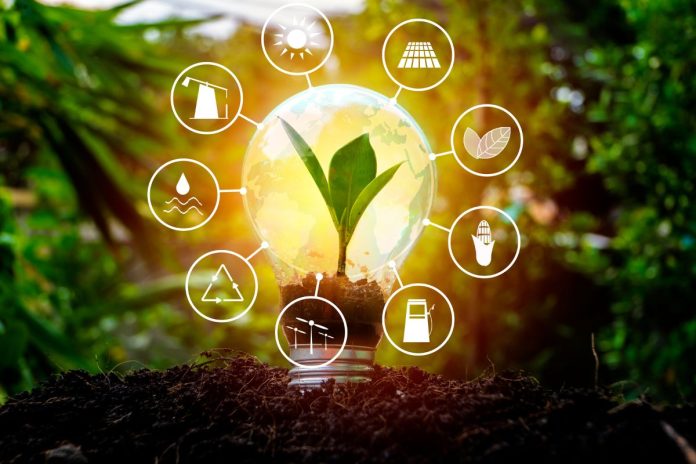Global Energy is the most important commodity for sustaining modern society. Considering the recent developments, the use of electricity will increase manifold because of the gradual electrification of transport and heating.
With the rise in household income, the global energy consumption of an average household is likely to rise a great deal in near future. The common presence of digitally connected devices will also increase the consumption of energy.
As more and more people come out of poverty in developing countries, the demand for household items such as air conditioning will increase.
Energy Systems will become complex
The energy sector is changing. While nobody can deny the increase in global energy demand in the future but there is a great deal of confusion at present. Global leadership is mulling over various scenarios for structuring the shape of global energy policy.
There is an urgent need for reducing fossil fuel consumption. However, building adequate infrastructure for generating energy from renewable resources will take time. Huge infrastructure needs to be erected for doing away with fossil fuels.
There are three main problems that the stakeholders will have to address, namely, environmental sustainability, energy security, and energy equity. No, denying it is a sticky situation having to balance the three.
Every policy option will have associated costs. Global consensus on policy formulation will go a great way to meet the energy requirements of the future.
Achieving Energy efficiency is crucial
Our modern society is dependent on fossil fuels. With our society increasingly becoming energy-dependent, it is becoming difficult to meet energy requirements.

Talking of the global scenario, the demand is far more than the supply of global energy. This lag is too big to fill up in the near future.
Energy systems are capital-intensive systems and would require gigantic investments in order to achieve global sufficiency in energy. On the other hand, we can meet the demand for energy if we undertake stringent processes that ensure efficiencies at the systemic level.
In the near intermediate and near future, the only way forward seems to be going for energy efficiency. In the short period, this will help us to meet our immediate needs while the energy infrastructure will continue to be built.
Use of Renewable Energy

Traditionally, we are mainly dependent on fossil fuels and geothermal resources for driving our energy production. Being capital-intensive, it is understandable that it is not possible to raise such a huge energy infrastructure in the short term.
However, renewable resources of energy will increase driven by the pressure of greenhouse effects and the environmental impact of using fossil fuels and geothermal resources. However, the fact remains that fossil fuels will continue to provide the maximum energy.
According to estimates, coal, oil, and gas will provide 70% of energy requirements even by 2050. The share of solar, wind and nuclear energy will increase but not enough to offset our dependence on fossil fuels.
The share of nuclear energy is expected to increase by 11% by 2050 and other sources of renewable energy will rise by 20%.
The growth rate of renewable energy resources will be fast. All across the globe, governments are putting in huge efforts and investments to increase the share of renewable sources. The process is going to be long, arduous, and gradual.
And, it is not going to require huge investments but also a great deal of political capital. Since we have been historically so dependent on fossil fuels, this reset will be difficult.
Global Scenario of Electricity Generation

With the increasing electrification of transport, home appliances, and industrial processes, it goes without saying that requirement for electricity will increase manifold.
According to the latest estimates, the global requirements for electricity will substantially increase by 2050. Global electricity generation in 2010 was 21.5 MWh.
In the wake of our rapidly increasing requirements, the global production of electricity will increase to 53.6 billion MWh by 2050.
Just the sheer size of electricity demand after 3 decades is mind-boggling. Accomplishing this feat is going to take work and gigantic investments and a huge infrastructure undertaking. And, the energy mix is going to be challenging for accomplishing such a herculean task.
Investments in Energy Sector
Considering the needs of the next three decades, we will need to invest in the energy sector in a very big way. The gigantic infrastructure required for generating electricity in the future will need big-ticket investments.
In terms of 2010 prices, the sector will require an infusion of USD 26 trillion to prepare us for the energy requirements of the next three decades. To meet our target of carbon emissions, around 70% of the USD 26 trillion must be invested in renewable electricity resources.
The major investments will be required in solar energy, hydro, and wind energy capacity building. The use of electricity will also increase in the manufacturing sector such as building oxygen gas plants, steel plants, industrial gas, oxygen generation plant, and oil refineries, etc.
Investment is the most important aspect of securing our future. Big as the investments might be, there is no other option for the global community except to undertake this monumental project.
A project of this size will present a big opportunity for mega-corporations. Power generation companies are now buzzing.
Shares of major power companies are witnessing a sharp rise. The underlying reason is that the energy sector is going to be the major draw for the next score and a half years.
Commitment to Global Climate Change
While it is necessary to create infrastructure to meet our future energy requirements, it is also equally important to fulfill our commitments to global climate change.
It is imperative that countries accept Doha Accord and negotiate a treaty that will be acceptable to all the countries.
Sustainability is as important as securing our energy future. Moreover, the countries are keen to accept the terms and are ready to make concessions to make our world sustainable.
Evolving and developing low-carbon technologies must be promoted even though their commercial application of them will not be profitable.
Increasing the generation of electricity from renewable resources will also play a significant part in reducing CO2 emissions.














